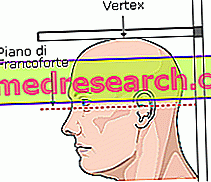See also: Whey Supplements - Whey Protein
Whey protein is the English name of "whey protein", a protein powder mix obtained from the liquid - called buttermilk, whey or whey - derived from the processing of cheese.

Whey is particularly rich in the homonymous proteins, which represent the most valuable protein fraction of this food. Their biological value is in fact extremely high, as are the other protein quality indices.
A few lines ago we talked about protein mix because whey proteins are made up of various types of proteins, in particular beta-lactoglobulins (~ 65%), alpha-lactalbumin (~ 25%), serum albumine (~ 8%) and immunoglobulins .
Whey proteins find a wide range of applications, ranging from the food industry (they are a common additive, especially in sweet foods, such as pasta, creams, puddings and bakery products) to livestock. It is however in the food supplement sector that whey proteins find their best known application. In fact, compared to other protein sources (eggs, soy, wheat, casein, etc.), Whey have some peculiar characteristics:
- high content of branched amino acids;
- superior biological value due to the excellent presence of essential amino acids;
- high digestibility with rapid increase in postprandial plasma concentration of amino acids.
Thanks to these characteristics the Whey protein:
- they provide the substrates necessary for protein synthesis (in which some B vitamins commonly added to whey protein supplements participate);
- suppress protein catabolism;
- promote recovery after strenuous training;
- act as a substrate for gluconeogenesis (energy production starting from some amino acids, which becomes important in prolonged fasting and in enduring physical activity);
- stimulate protein synthesis and promote muscle growth;
- increase insulin release, decreasing postprandial blood glucose.
Isolated Whey Protein or Concentrated Whey Protein: Which to Choose?
In the varied market of food supplements you can find different types of whey proteins. In general, a product is considered to be of higher quality the higher the protein content and the lower the percentage of carbohydrates (lactose) and fat. These characteristics also affect the price of the product, since the higher the cost of the isolated raw material. With the addition:
vitamins (they are important but cheap),
creatine (the Chinese one has a particularly low cost and increases the protein nitrogen, allowing to use less protein in the product)
and carbohydrates (maltodextrins cost much less than whey protein),
they do not justify a higher price than whey protein sun supplements.
Regarding the raw material used, apart from the various sources of origin, Whey supplements can contain isolated or concentrated whey proteins . The latter are richer in fat, lactose and minerals, compared to a lower protein content (70-85%). For this reason they are less expensive than isolated whey proteins, where the protein content is on average between 89 and 94%. Therefore, in the presence of lactose intolerance, isolated Whey Proteins are undoubtedly a better choice, although slightly more expensive. If instead the goal is simply to build muscle mass, concentrated proteins are also a good compromise between quality and price.
Ion exchange is the technique that allows to obtain isolated Whey proteins with the highest protein concentration (> 90%), but poor in some important components - such as lactoferrine, immunoglobulins and glycomacropeptides - which are lost or denatured during the production phases (the ion exchange process separates proteins based on their electrical charge, using some chemical substances). These fractions are instead preserved with the various filtration methods used to produce concentrated Whey protein; among these the classic microfiltration and ultrafiltration techniques stand out, which use physical filters to separate fat and lactose from the protein, without damaging it (the differences between the two are minimal and depend on the size of the filtration pores, about one micrometer large in the microfiltration and 4 times lower in ultrafiltration). According to the above, ultrafiltered and microfiltered Whey Proteins tend to have a lower protein content (about 80%) than those with ion exchange (which reach or slightly exceed 90%). The best compromise, in this sense, is offered by the Whey proteins obtained by exploiting a technique called cross-flow microfiltration, which allows to reach protein contents close to 90%, preserving important components such as lactoferrins and macropeptides.



